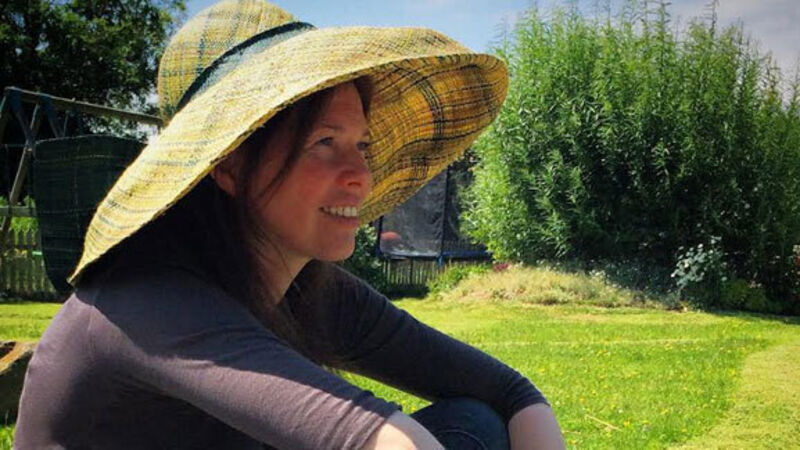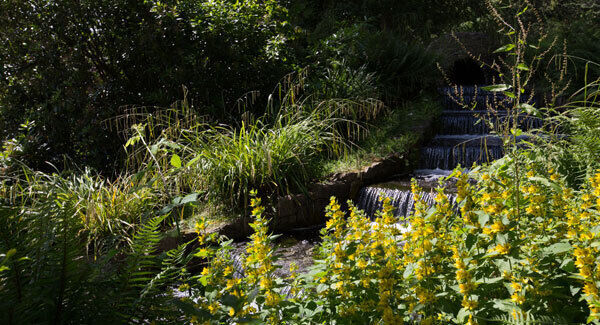Lights, wellies, action: When gardening is the reel thing

DARE To Be Wild is currently being screened in Irish cinemas — it is a film about Irish garden designer (and earth mother if ever there was one), Mary Reynolds and her journey to win gold at Chelsea back in 2002, but also about her spiritual and romantic life.
It’s not a doc, it’s a film with scripted actors and its uplifting story and cinematic charm is highly recommended to even non-gardening filmgoers.
It is a love story, or at least wrapped up in romantic interest, but it’s also a love story about wild places and the scenes of Ireland and Ethiopia are so stunning that you might want the tissues more for tears of joy than the ‘will they won’t they’ moments.
Warning — there is a sprinkling of fairy dust and some ‘Orishness’ included that may irk some critics but bejayus get over it.
Actually get into it. I remember hearing Mary live on the radio looking for some plants and thinking that’s gas — fair play to her.
Nothing wrong with doing it our way, your own way or even way ahead of your time way. That’s inspirational.

And that garden WOW and all those years later still WOW and the recreation of it on screen — WOW too.
Mary’s work was a game changer and possibly as influential as Riverdance in elevating a cultural-spiritual-artistic awareness of Ireland around the globe — so yeah I’m saying go see the film, but I’m also inspired by seeing a horticultural hero of mine on screen, it got me thinking on some other green-fingered flicks worth investigating.
I can pinpoint my own passion for nature and tending a garden to a few key events in my life and some of it was more than skimming stones across the grand canal and identifying bird song with my granddad or the first time a girl held a buttercup under my chin — even if nothing much beats either of those — I have to say reading and seeing the work of Éamon de Buitléar was deeply influential.
And while I’m at it — come on RTÉ and TG4, it is time for some reruns.
Simultaneous to Éamon’s eye-opening documentaries, my encounters with Irish and Greek mythology — where trees captured warriors and women turned into trees or butterflies and the whole magic realm of the living environment gave me ‘awe’ and belly excitement like getting out of Raiders of the Lost Ark and fake whip-fighting Nazis with your mates in the foyer (still barred).
Now I’m old enough to remember everybody running around with lightsabres, ET T-shirts, Terminator shades, Blade Runner quotes, with Alien and Predator excitement.
There was Planet of the Apes, Blake’s 7, Dr Who and Logan’s Run on TV and Space Invader games in every chipper, so whenever there was a film on TV that was set in space I sat down and watched it.
One Saturday I sat down and watched (1972 dir Douglas Trumbull) a sci-fi movie about a spaceship carrying the only forest vegetation rescued from a defoliated Earth.
Talk about break your heart, talk about I got to save the planet.
It was pivotal in making me look at Greenpeace and biodiversity activism, two weeks later I found a copy of Silent Spring by Rachel Carson in a second-hand book store in Dublin — I bought it there and then because it was a similar theme and the silent bit screamed out at me — and so my ecological conviction was set.
I guess I was about 13. I haven’t shut up about the natural world since.
Many years later I got the chance to crash a spaceship into Bloom in the Phoenix Park and also to build a garden for Universal Studios based on Dr Seuss’ story (book and film) the Lorax — which was about the last tree seed and the boy trying to germinate it.
I have to admit that the musical version of Little Shop of Horrors (1986 dir Frank Oz) did make me enthusiastic about Venus flytraps and sundews. The story is about a nerdish florist who finds success in business and with the ladies — with the support of a giant man-eating plant.
“Feed me Seymour” is still the first thing that pops into my head whenever I see a Venus flytrap – sometimes I even say it out loud.
So if you ever catch me doing that in a garden centre, it is not a low blood sugar SOS, it’s just my uncontrollable idiosyncrasies showing me up.
If you like kitsch musicals such as The Rocky Horror Show, you’ll get a kick out of this one. There is a no-nmusical version with a young Jack Nicolson directed by Roger Corman from 1960 worth looking out for too.
Then of course if you like flesh-eating plants there is always (1962 dir Steve Sekely & Freddie Francis) with the great line “all plants move but they don’t usually pull themselves out of the ground and chase you”.
It too opens with a Venus flytrap and the premise is alien plant invasion via a meteor storm. I had seen the 80s BBC series before I’d seen the original film or heard about the book, but the idea of the triffid has impacted upon gardener’s consciousness, many of us refer to our attempts at eradicating Japanese knotweed or giant hogweed as tackling the triffids.
If you’d like a more modern scary plants movie with an ecological messages there is always (2008 dir M. Night Shyamalan) with Mark Wahlberg as a science teacher struggling to help his wife and other survivors escape a plague sweeping America.
Before I settled into gardening as my way of life, I did study art and ventured into photography and filmmaking and that brought me into contact with some great films and in particular the extended work of Peter Greenaway, who frames his shots with a nod to renaissance and baroque paintings – exquisite stuff and if you like art or murder mystery/conspiracy theory then you have to check out his films about Rembrandt’s Nightwatch painting, Nightwatching (2007) and J’accuse ( 2008).
The first Greenaway film I’d seen was long before college — (1982).
The plot is on the surface about a liaison between a 17th-century artist and the beautiful lady of the manor who offers him sexual favors in return for landscaping her husband’s country estate. I bought a spade the next day.
Only joking — but it did turn me on to the idea that gardens were a form of creative expression. The film is layered with philosophical questions that went over my teenage head but the music score and the garden scenes won me.
It is set in the immaculate Groombridge Place in Kent, England — which was also utilised as scenery for Joe Wright’s 2005 film version of Pride and Prejudice .
You might have other favourites, I know my picks have been a bit sexual, a bit violent and a touch of horror too but that’s a typical day in the garden – or is that just me?
And if you are trying to raise awareness or funds for your community garden, then maybe an outdoor screening of a favourite gardening flick might just do the trick — or as an alternative to bonfire boozing at Halloween you could curate a scary plant movie.
All that said before you go down the Netflix rabbit hole, do get outside for a few hours and enjoy the real garden in 3D.











